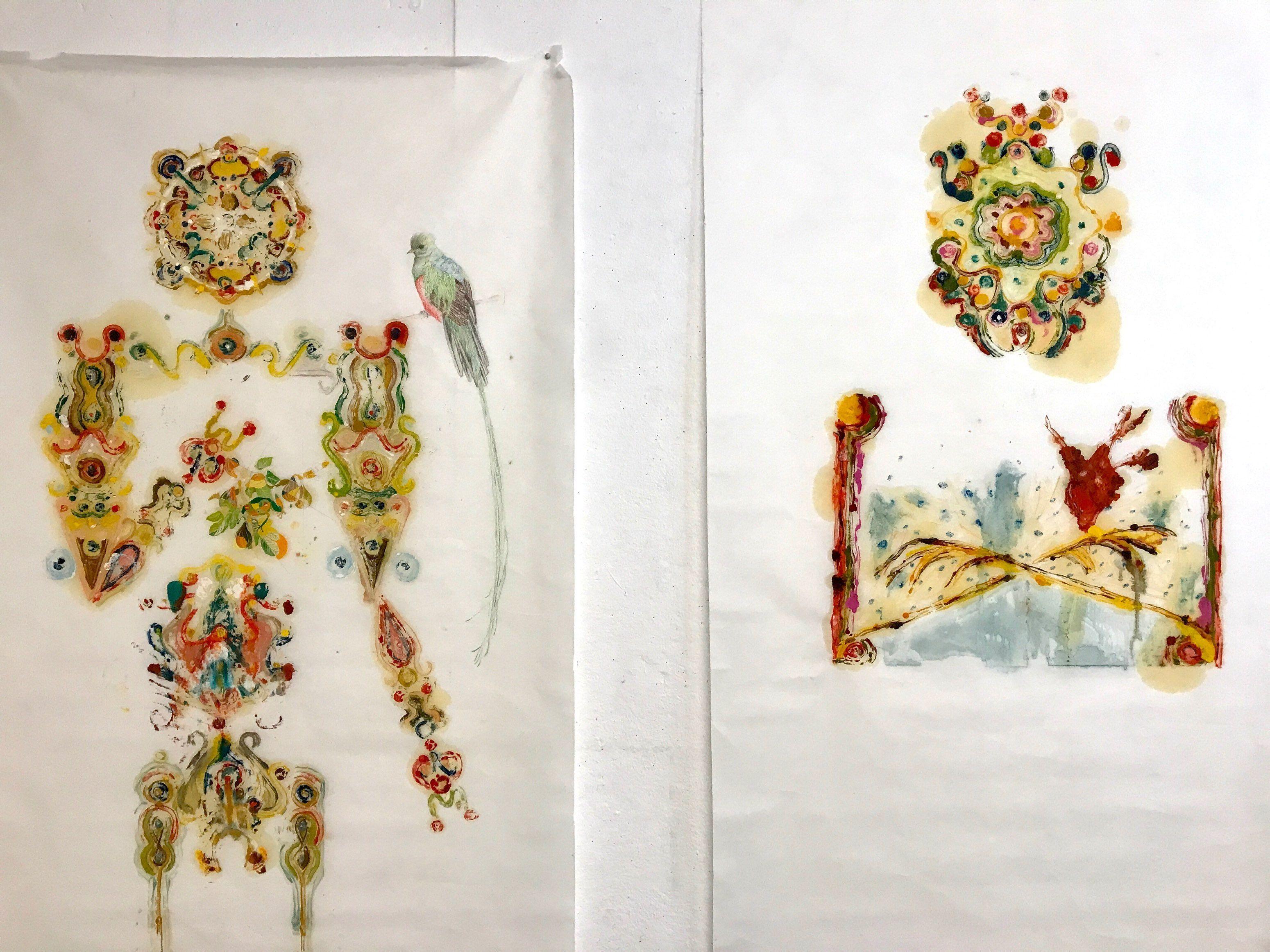The works presented here were born out of the desire to imprint bodies on sheets or canvases; they were born out of the desire to adorn dead bodies as was the case, for example, of the mummies in ancient Egypt. Some of these works have been presented in a school context. The artist is studying at ArCo, where he attends the Year 2 of the Advanced Course in Visual Arts. Other works integrated the performance Almada Negreiros, o bailarino [“Almada Negreiros, the dancer”], presented last October at the Gulbenkian Foundation. The solution to the challenge of presenting a work in the movement temple-space that is Gulbenkian came precisely from these works, since the essence of the place leads the author to the very act of living and dying, i.e. dancing, reinventing oneself, being present and being reborn. ― Luís Guerra
brain, eyes, hands and paper
What is this capacity of the body that takes what we observe and puts it on a sheet of paper? I'm talking about the body transmuting itself into a drawing, in an intricate fusion between eyes, hands and paper. It's like the development of a mental muscle that mysteriously extends down the arm, reaches the hand and travels across the paper. It turns into movement and dynamism. There are people in the world of performing arts who have been drawing even before they started using their bodies as tools. Luís Guerra, João Galante and Elizabete Francisca are some of these people. These exhibitions reveal three different ways of using mental muscles, each with its own identity and beauty. Drawing is a physical act that requires time, memory, focus, practice, will, endurance and freedom. It's like dancing. ― Carlota Lagido
VERNISSAGE
